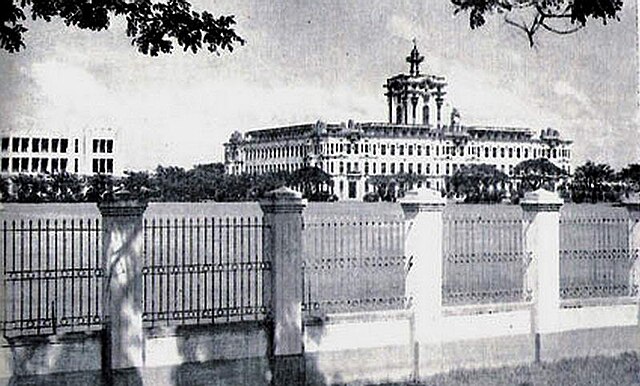Dispute over the oldest school in the Philippines
The oldest universities, colleges, vocational schools and the first modern public education system in Asia were created during the Spanish colonial period. The earliest schools were founded by Spanish Catholic missionaries. By the time Spain was replaced by the United States as the colonial power, Filipinos were among the most educated people in all of Asia. Of the many educational institutions established during the colonial era, only a few remain extant today, such as the University of Santo Tomas (1611), Colegio de San Juan de Letran (1620), Real Colegio de Santa Potenciana (1590), Universidad de San Ignacio (1590), Colegio de San Ildefonso (1595), Santa Isabel College Manila (1632), and the Universidad de San Felipe de Austria (1640), among others.

The Royal and Pontifical University of Santo Tomas, established by the Dominican missionaries in 1611 and raised to the rank of a university in 1645 by Pope Innocent X through the petition of Philip IV of Spain, is currently the educational institution with the oldest extant university charter in Asia.
University of Santo Tomas
The University of Santo Tomas, officially the Pontifical and Royal University of Santo Tomas, Manila or colloquially as USTè, is a private, Catholic research university in Manila, Philippines. Founded on April 28, 1611, by Spanish friar Miguel de Benavides, third Archbishop of Manila, it has the oldest extant university charter in Asia and is one of the world's largest Catholic universities in terms of enrollment found on one campus. It is the main campus of the University of Santo Tomas System that is run by the Order of Preachers.
The Escritura de la Fundación del Colegio de Santo Tomás (Foundation Act) of 1611 stored in the UST Archives
The UST Main Building and the Central Seminary building during in the 1940s.
The liberation of internees in front of the UST Main Building by the Americans in February 1945.
The UST Main Building is the first earthquake-resistant building in Asia.





